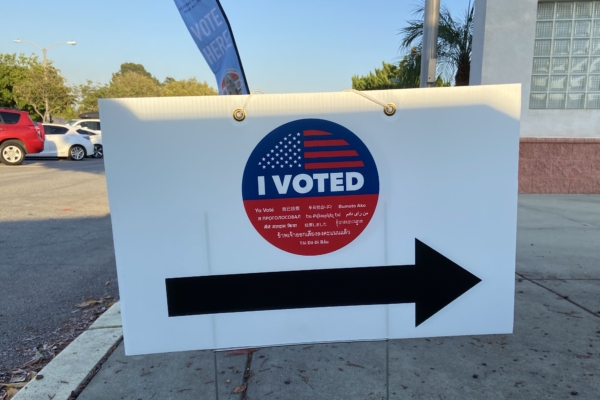As the countdown to the presidential election on November 5th intensifies, more than 5 million Americans have already cast their votes ahead of the election, including a large number of Californian voters.
In addition to deciding the next U.S. President, Californian voters are also faced with making choices on 10 State Propositions and selecting a California Federal Senator. These positions and propositions are not district-dependent, and all eligible California voters can participate. However, each position allows for the selection of only one candidate, as any excess votes will be deemed invalid.
Moreover, Californian voters must also vote for congressional representatives in their respective districts, state senators, assembly members, county judges, and city officials, with specific district candidates based on the voter’s registered address.
California’s ballots typically consist of various sections, including:
1. Local district seats such as school board members, city council positions, a state senator, an assembly member, a California Congressional Representative, and city propositions.
2. County government seats, which commonly include county commissioners, local district attorneys, multiple superior court judges, and county government propositions.
3. Sequentially listed 10 State Propositions in California, covering a range of issues from education bonds to minimum wage and healthcare provisions.
4. Presidential candidate positions with the current contenders being Republican candidate Trump (running with Pence) and Democratic candidate Biden (running with Harris), along with other party candidates listed on the ballot.
5. California Federal Senate seat, with California having two Senators who are elected every 6 years. Currently, Senator Alex Padilla’s term extends to 2029, hence voters this year only need to vote for the other seat.
Voters will also find party affiliations marked for Federal Senators, Congressional Representatives, State Senators, Assembly Members, and Presidential candidates on the ballot, but party affiliations for judges, school board members, county, and city officials will not be displayed. Voters can refer to endorsement lists from the California Republican Party (CAGOP) and the Democratic Party (CADEM) for guidance.
In addition, various county-specific parties like the Los Angeles GOP (LAGOP) endorse candidates and propositions within their regions, allowing voters to look up these endorsements for reference.
The two Federal Senators represent the rights of every California voter, and this year’s election will determine their voice at the federal level for the next 6 years, including the remaining term after Feinstein’s passing, making the competition for this seat highly intense.
Competing for this seat are MLB Legend Steve Garvey, the Republican candidate, and Adam Schiff, a veteran Democratic Congressman from California. Both candidates acknowledge the crises in California but propose significantly different solutions.
Garvey advocates for practical solutions to address issues like rising living costs, increasing violent crimes, and homelessness by focusing on mental health and addiction treatment, job creation, supporting small businesses, and education quality.
Schiff also emphasizes lowering living costs while advocating for environmental and abortion protection, having led investigations into former President Trump and the Capitol building incidents.
Regarding border issues, Garvey stresses strengthening border security to combat drug cartels and prevent drug trafficking into the U.S., advocating for border closure, while Schiff opposes border walls as a solution to illegal immigration.
Garvey is endorsed by the California GOP, while Schiff is endorsed by the Democrats.
It is noteworthy that voters will need to select two options on their ballot this time: first choosing the Federal Senator for the full 6-year term ending in 2031, then the Senator for the term ending in January 2025.
California, once a top choice for immigrants in the U.S. and worldwide, has seen millions leaving the state rapidly in recent years. Factors like high living costs, surging property crimes, exorbitant personal and corporate taxes, homelessness, illegal immigration issues, and ideological education penetration in schools are cited as major reasons for the exodus.
Experts have also identified government policies as the primary cause of these issues, prompting voters to seek change through their election choices.
California’s policy decisions start in the legislative branch, where laws pass through the votes of 80 Assembly Members and 40 Senators before being signed into law by the Governor. With the state having been dominated by Democrats for decades, the party currently holds a commanding majority in the legislature with 62 seats to 17 in the Assembly (1 vacant seat) and 31 seats to 9 in the Senate.
In the upcoming election on November 5th, voters will have the opportunity to re-elect their preferred district representatives.

